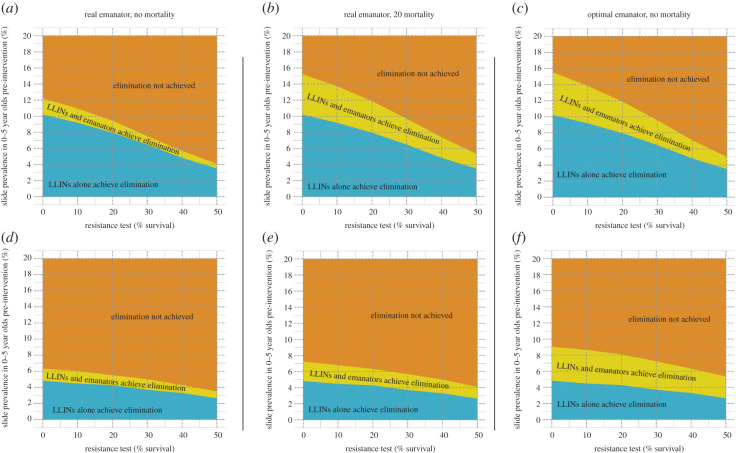Figure 4.
(a) How the maximum pre-intervention prevalence in 0–5 year olds at which elimination is achievable (y-axis) decreases with an increasing pyrethroid resistance (defined as the proportion of mosquitoes that survive a discriminating dose bioassay, x-axis). The mosquito has a proportion of outdoor biting (pre-intervention, fixed at 20%) and a high HBI (HBI = 92%). (b) A scenario where emanators now have a 20% mortality effect that is retained regardless of the level of bioassay survival. (c) A scenario involving the optimal emanator that repels all outdoor biting mosquitoes but does not cause any mortality. (d–f) Repeats of (a–c), but with a mosquito that has a much lower HBI (16%). It is assumed that 20% of biting happens outdoors prior to any intervention in all of the panels in this figure.

